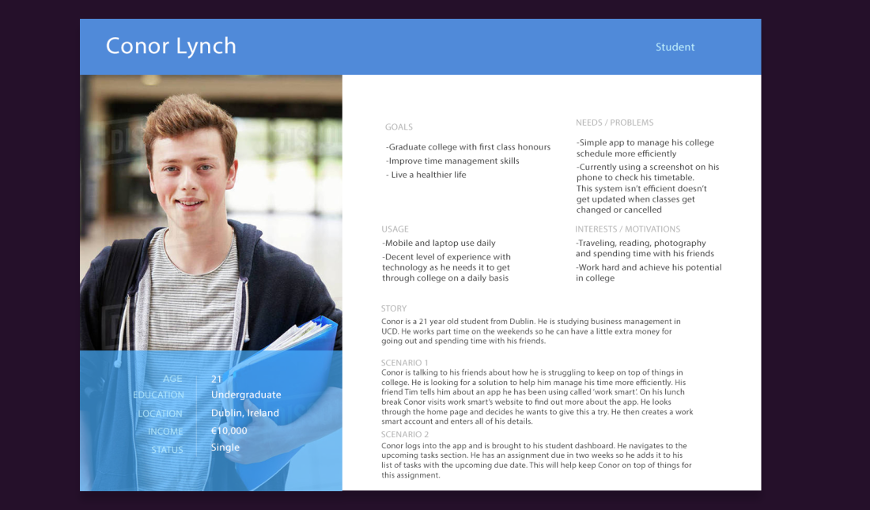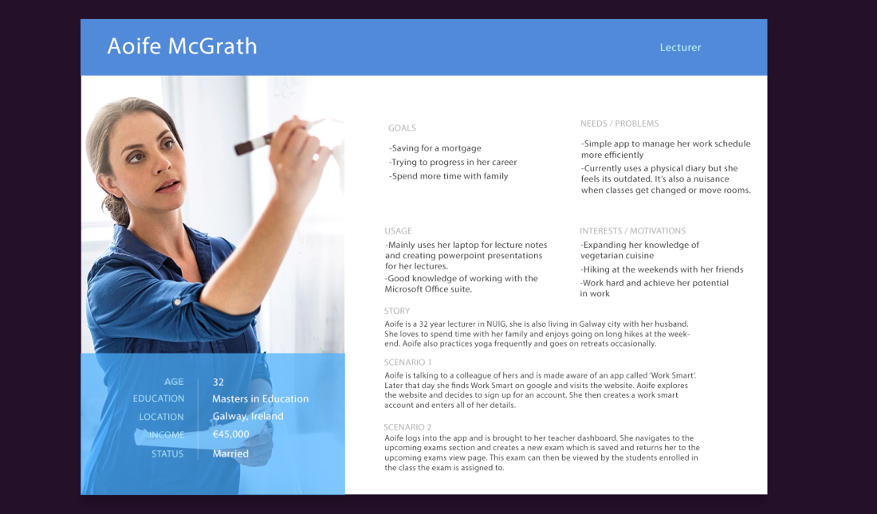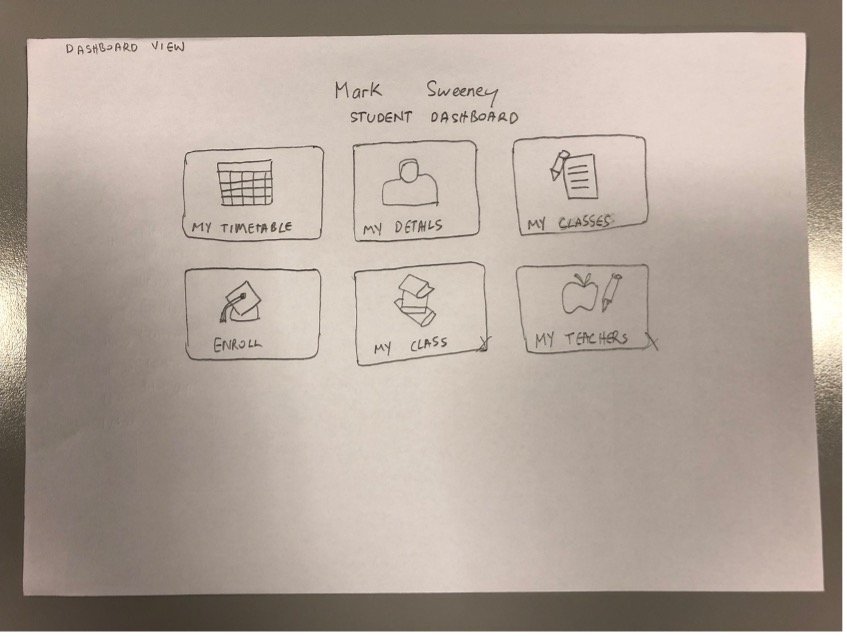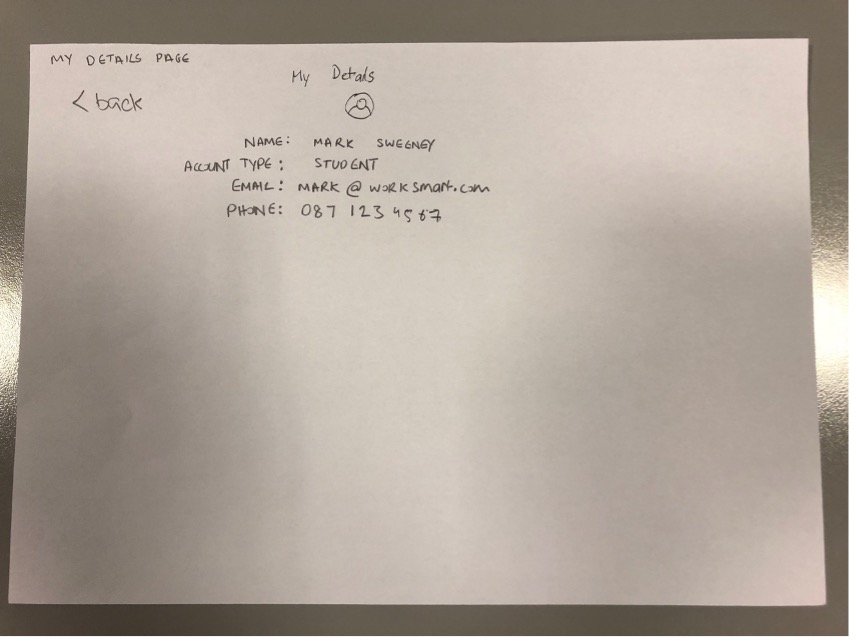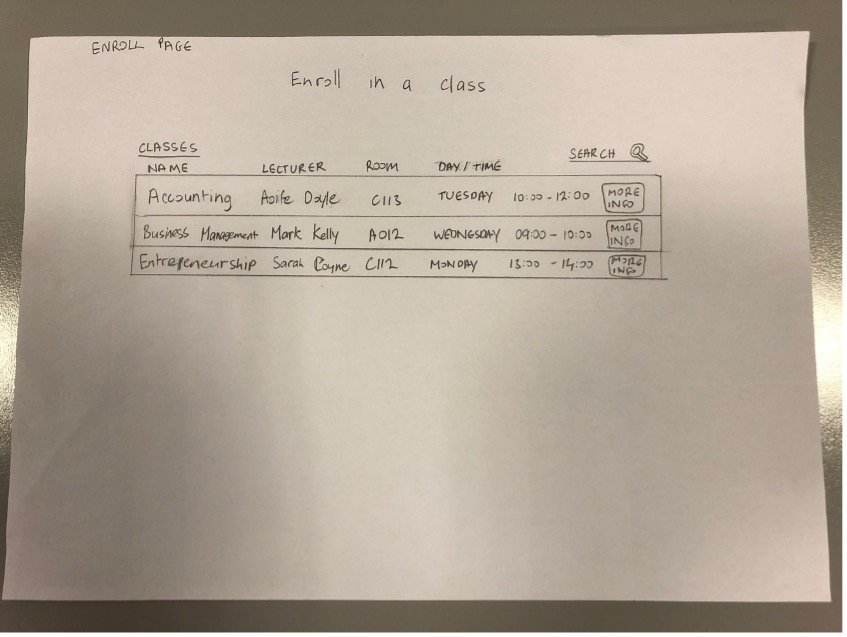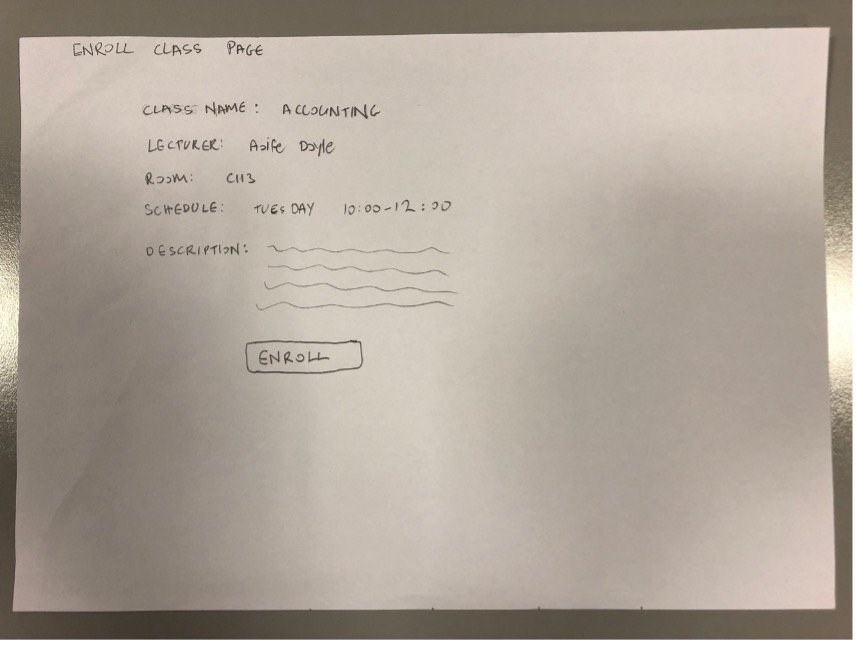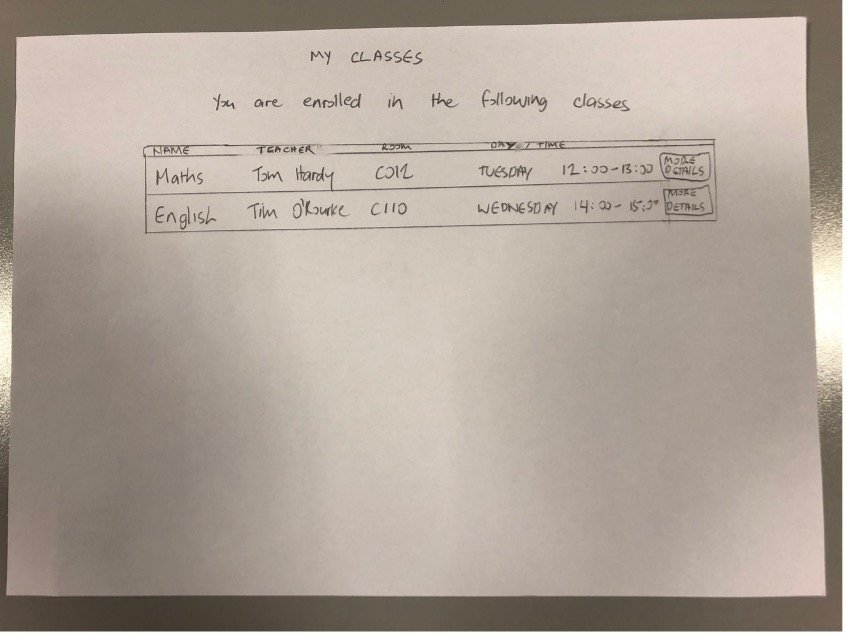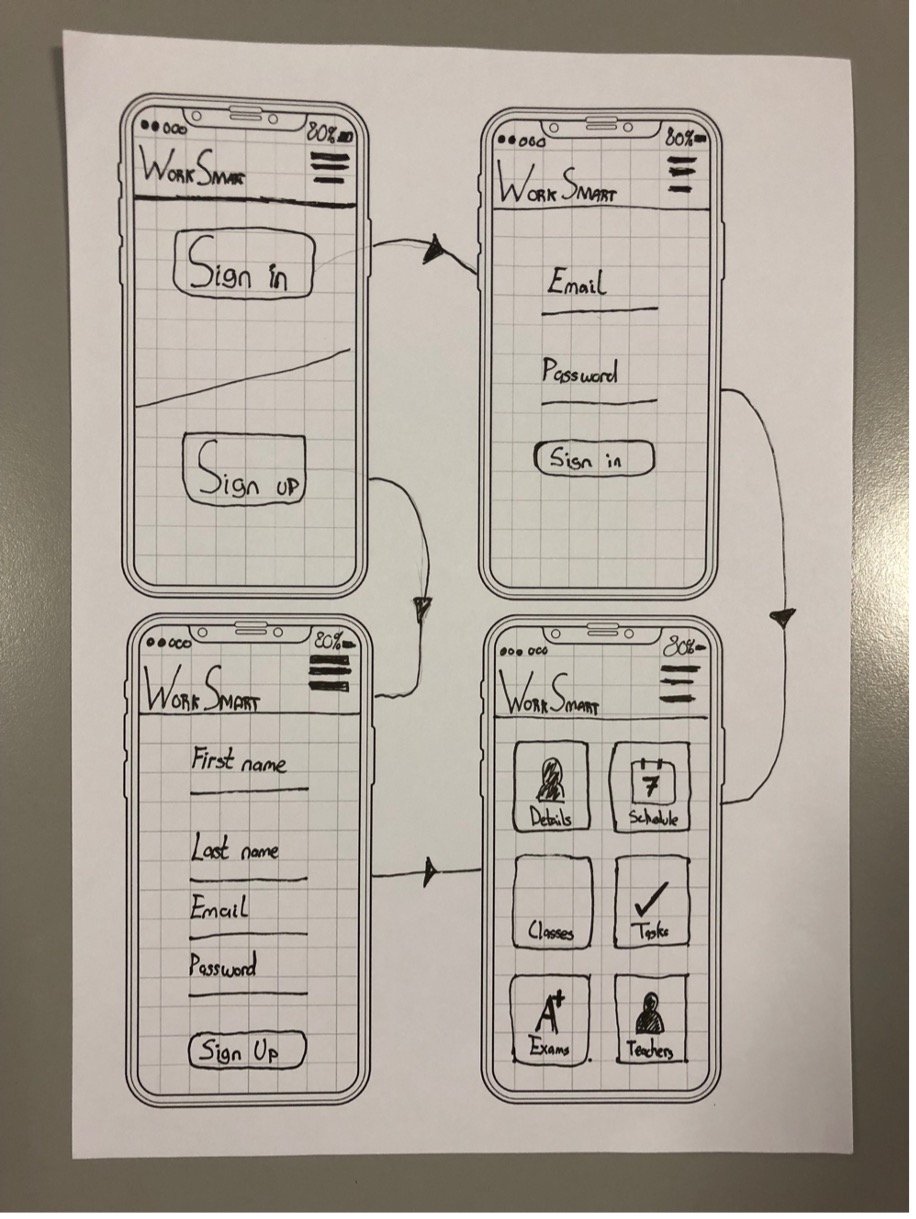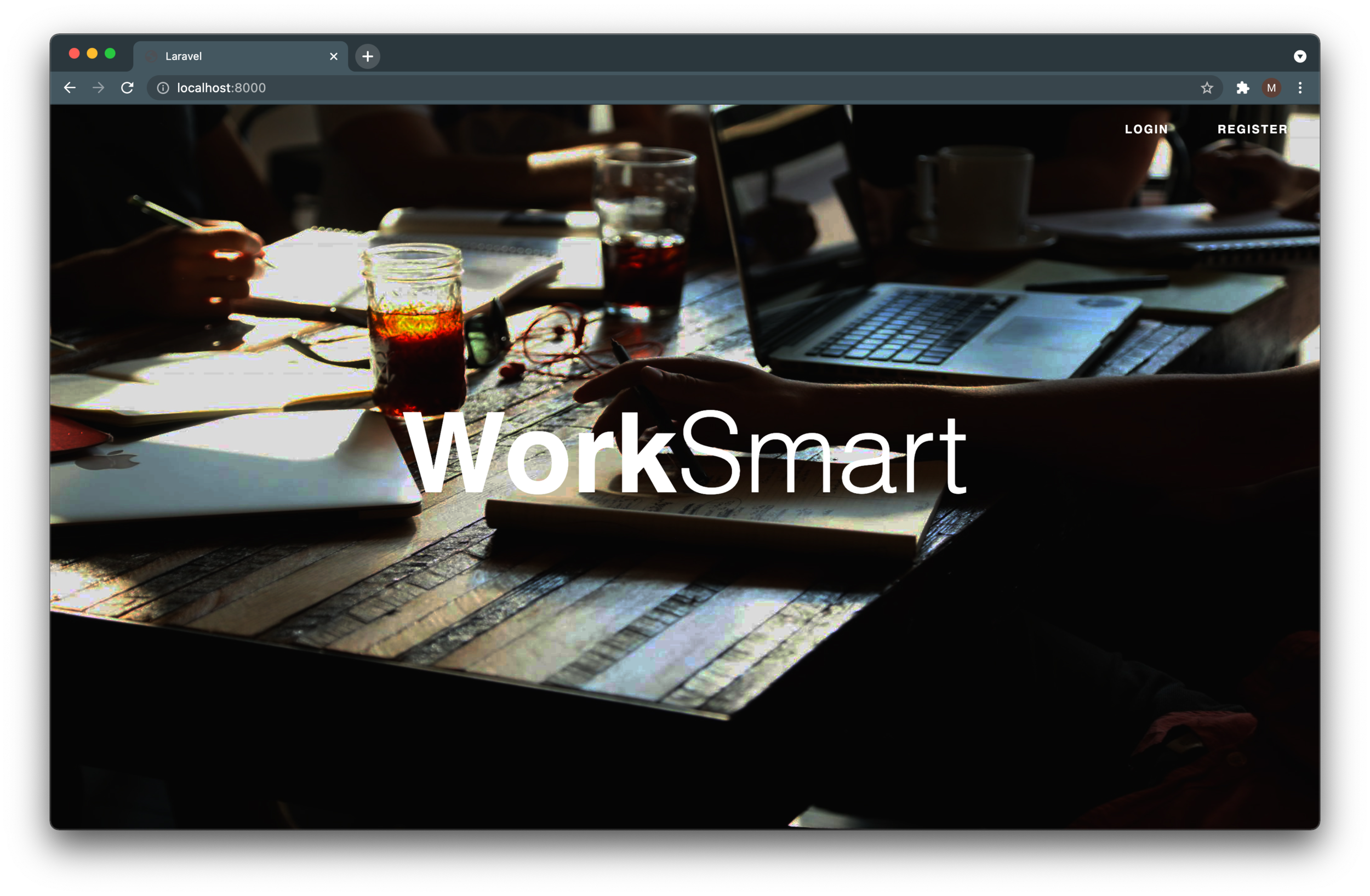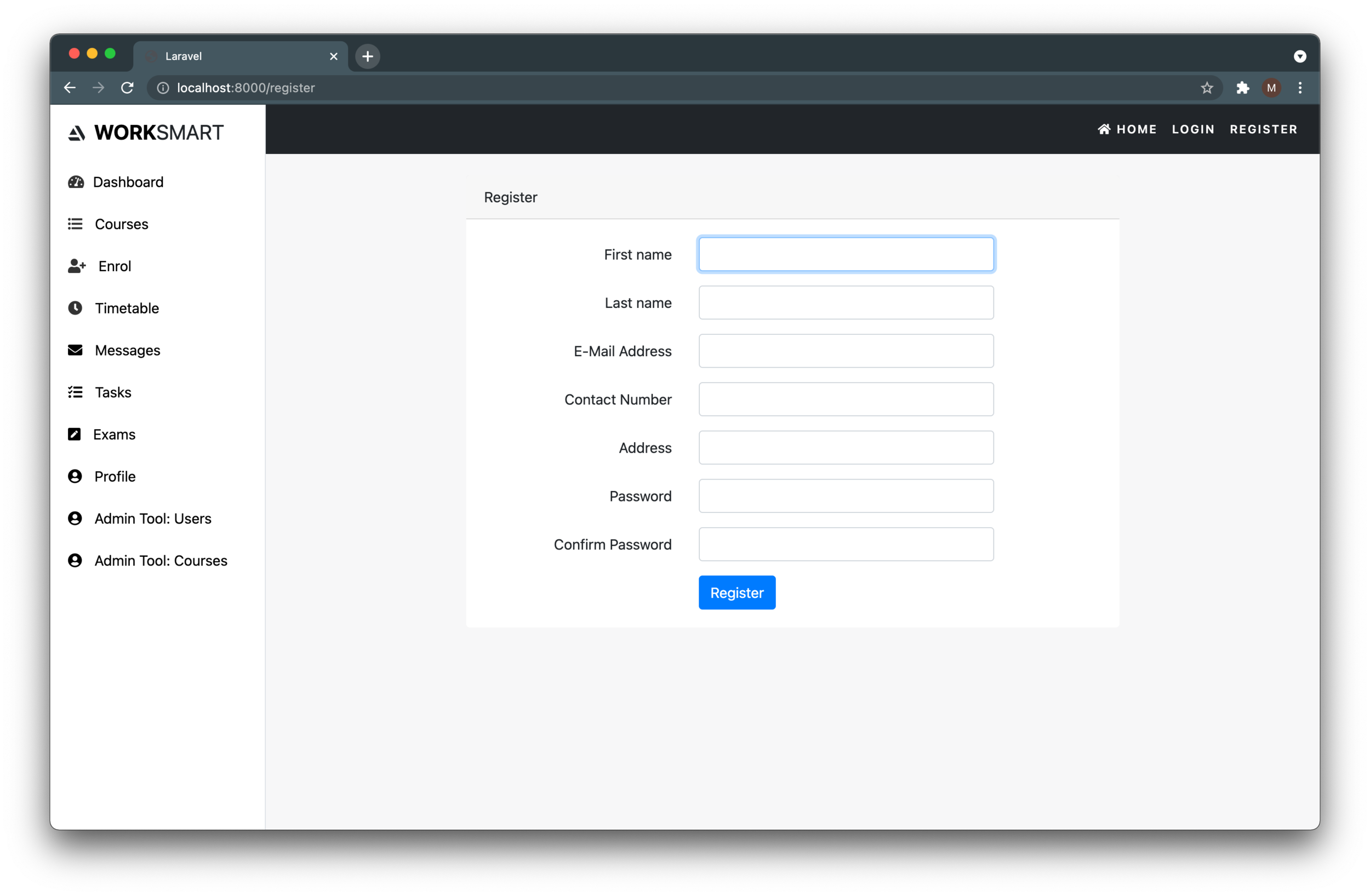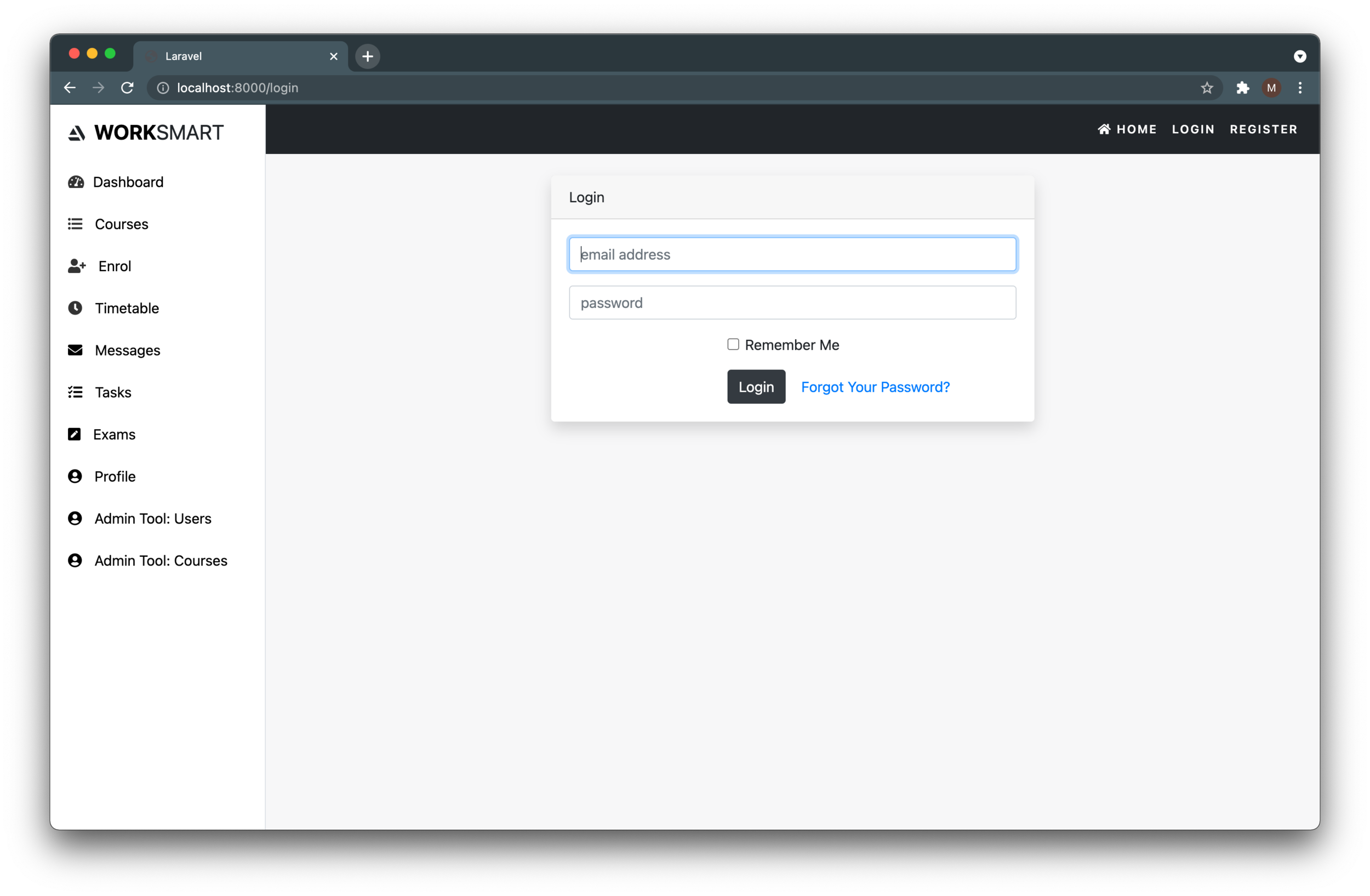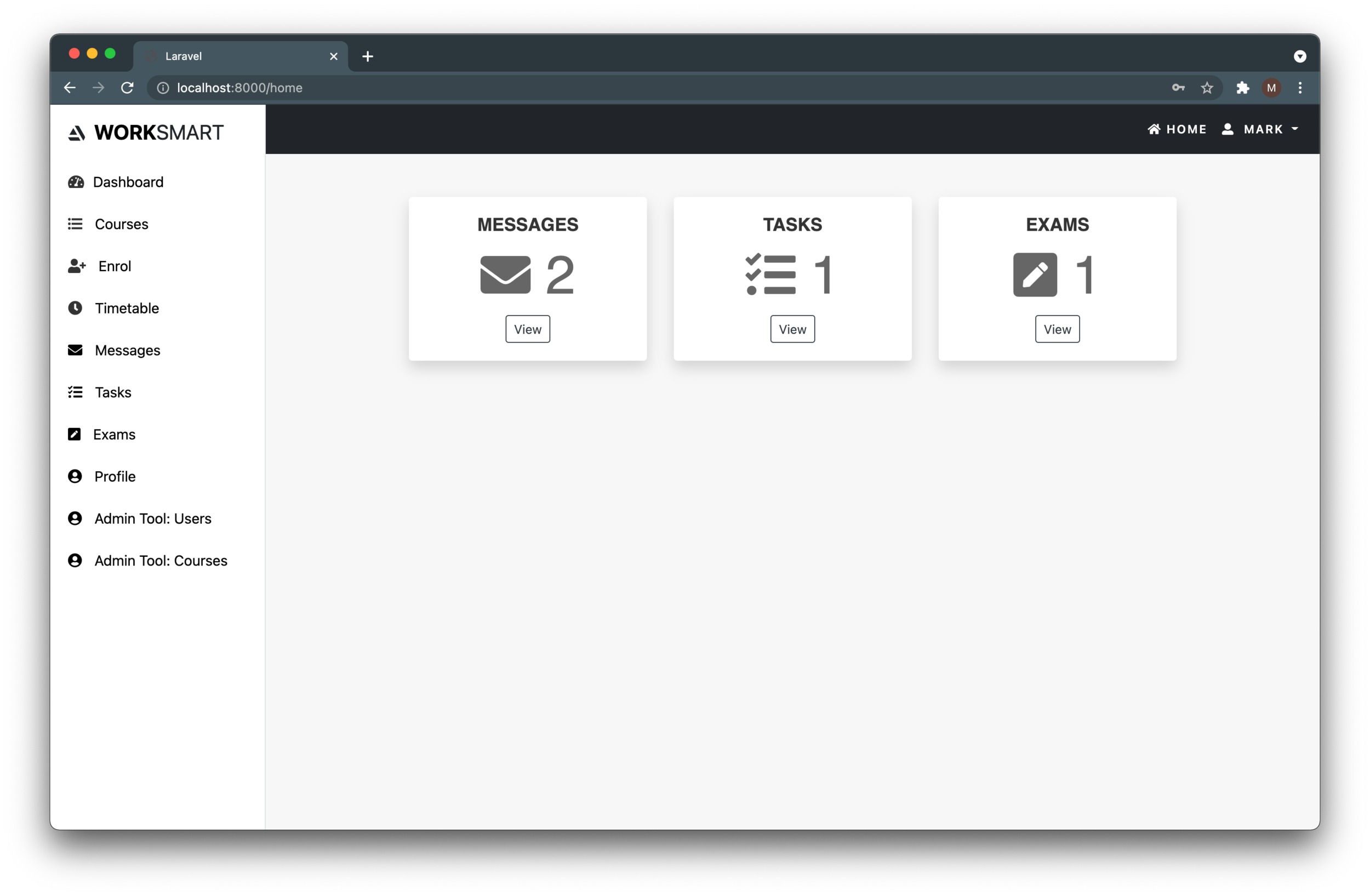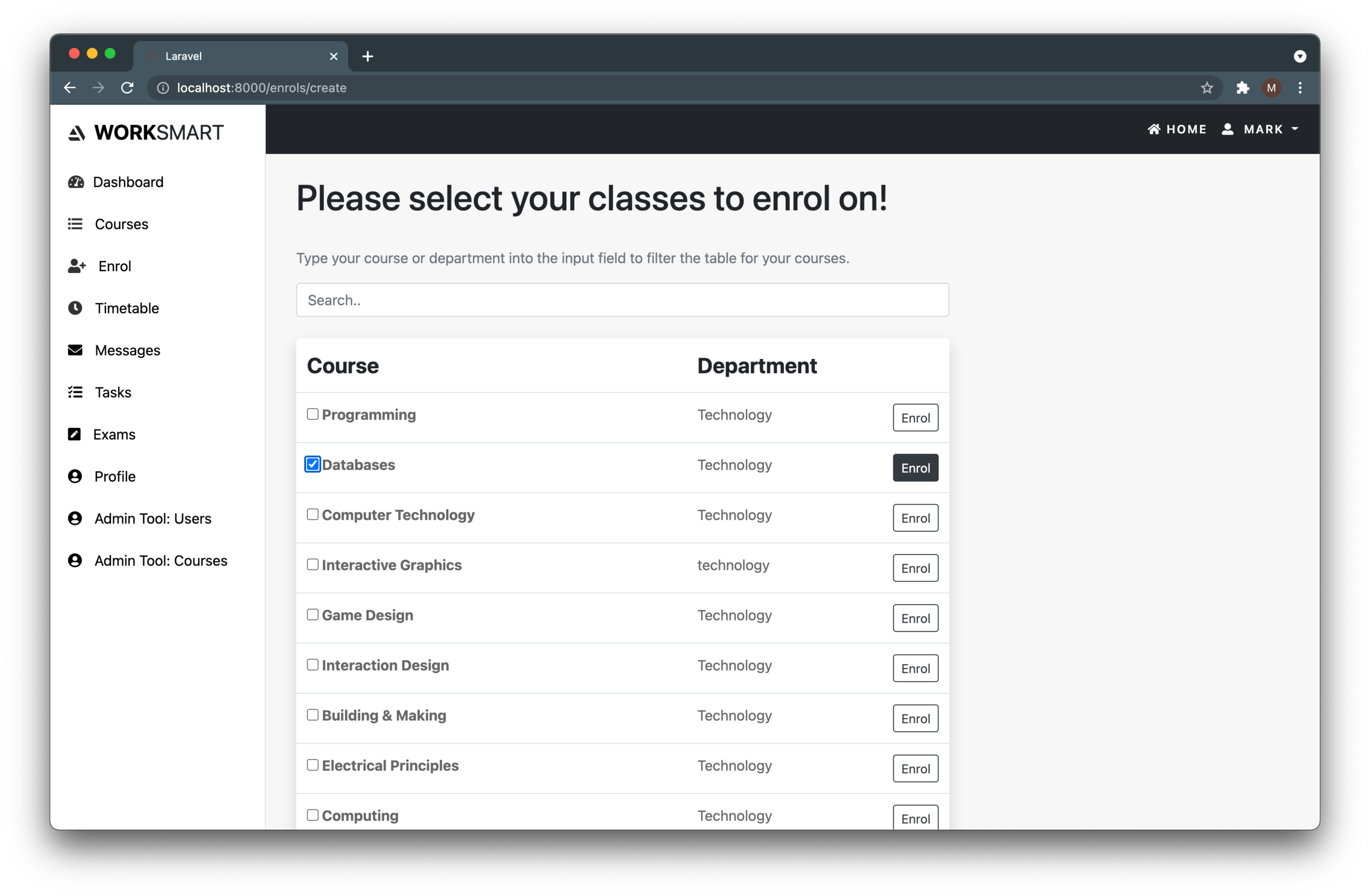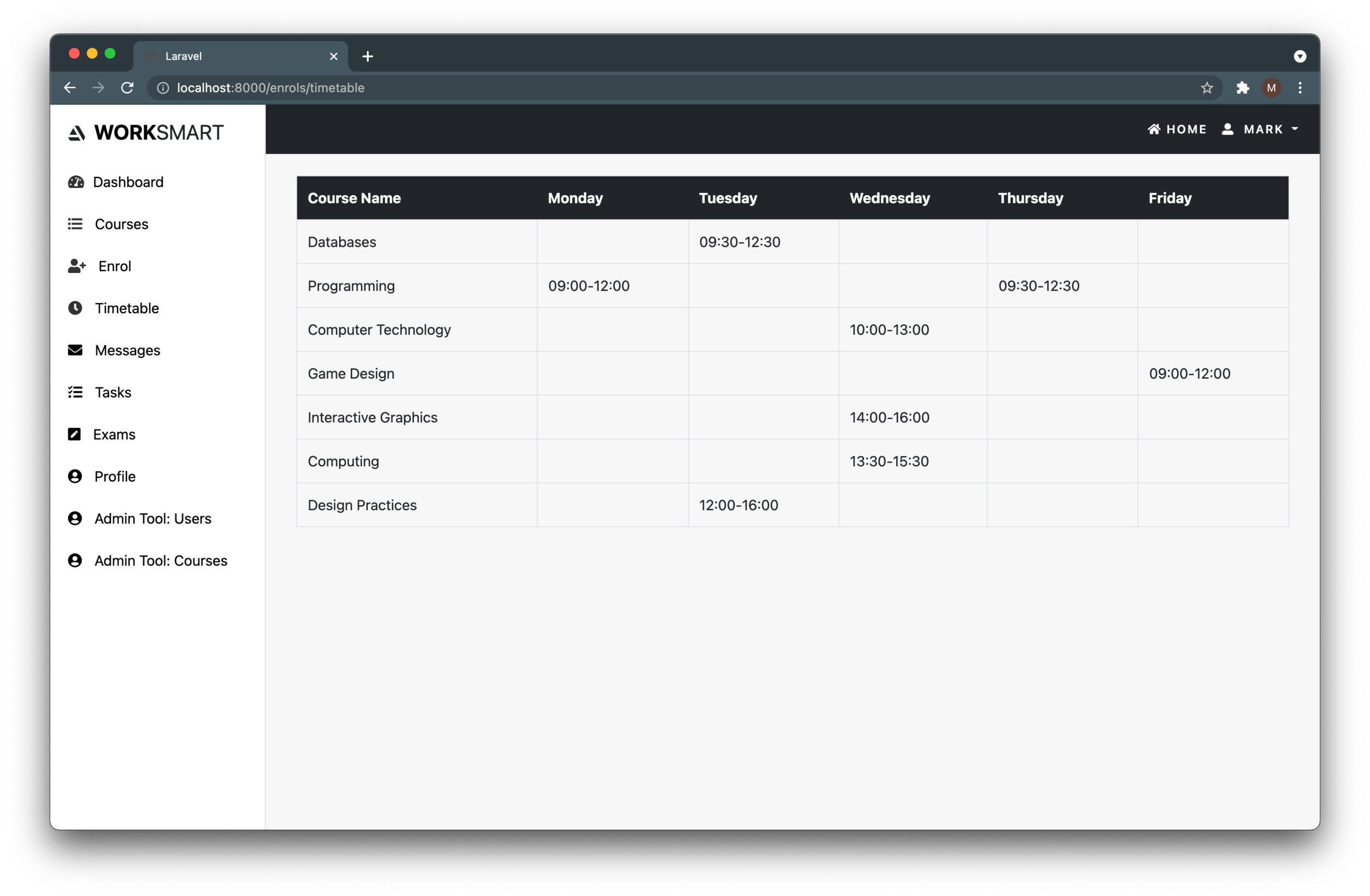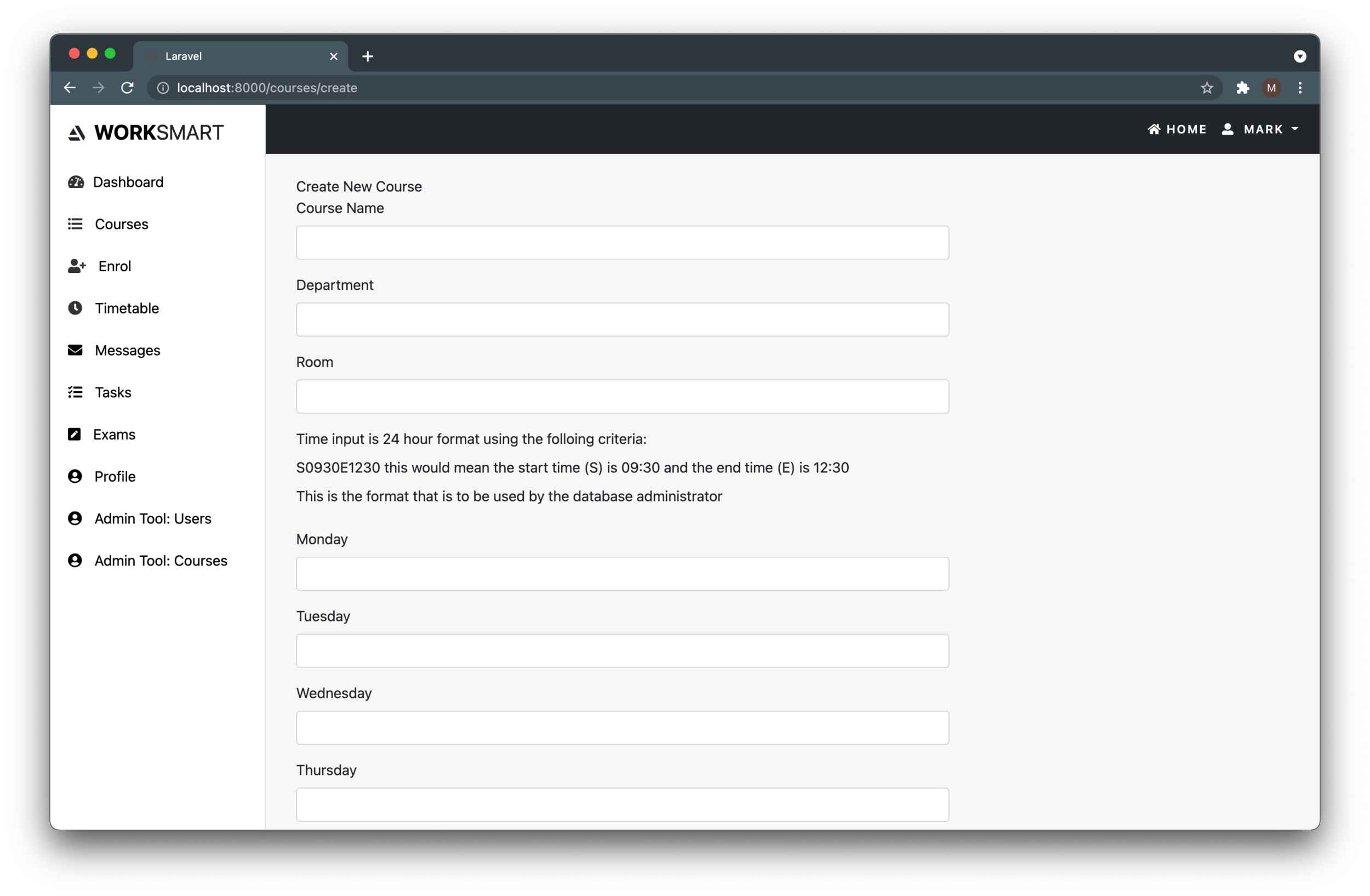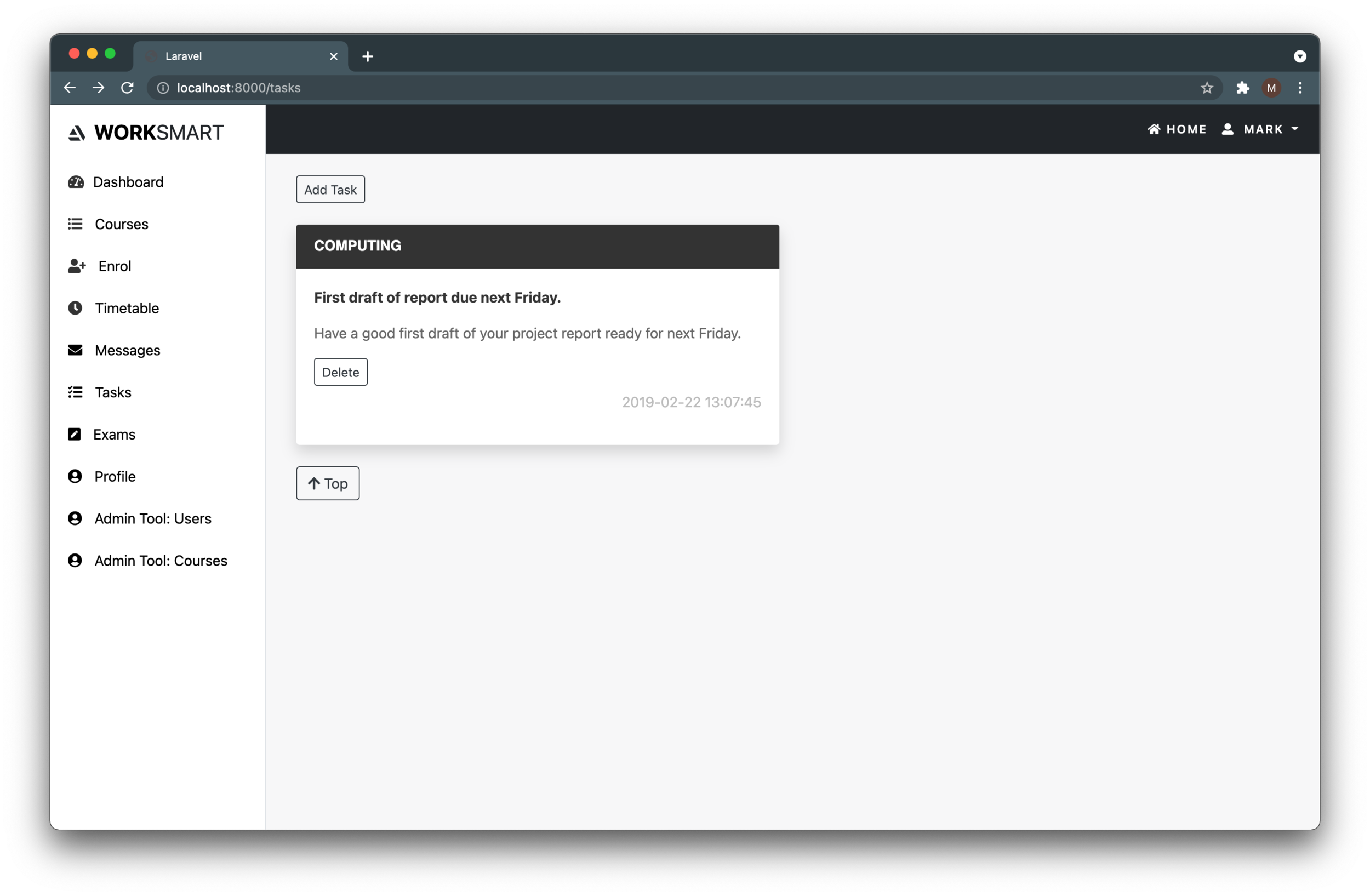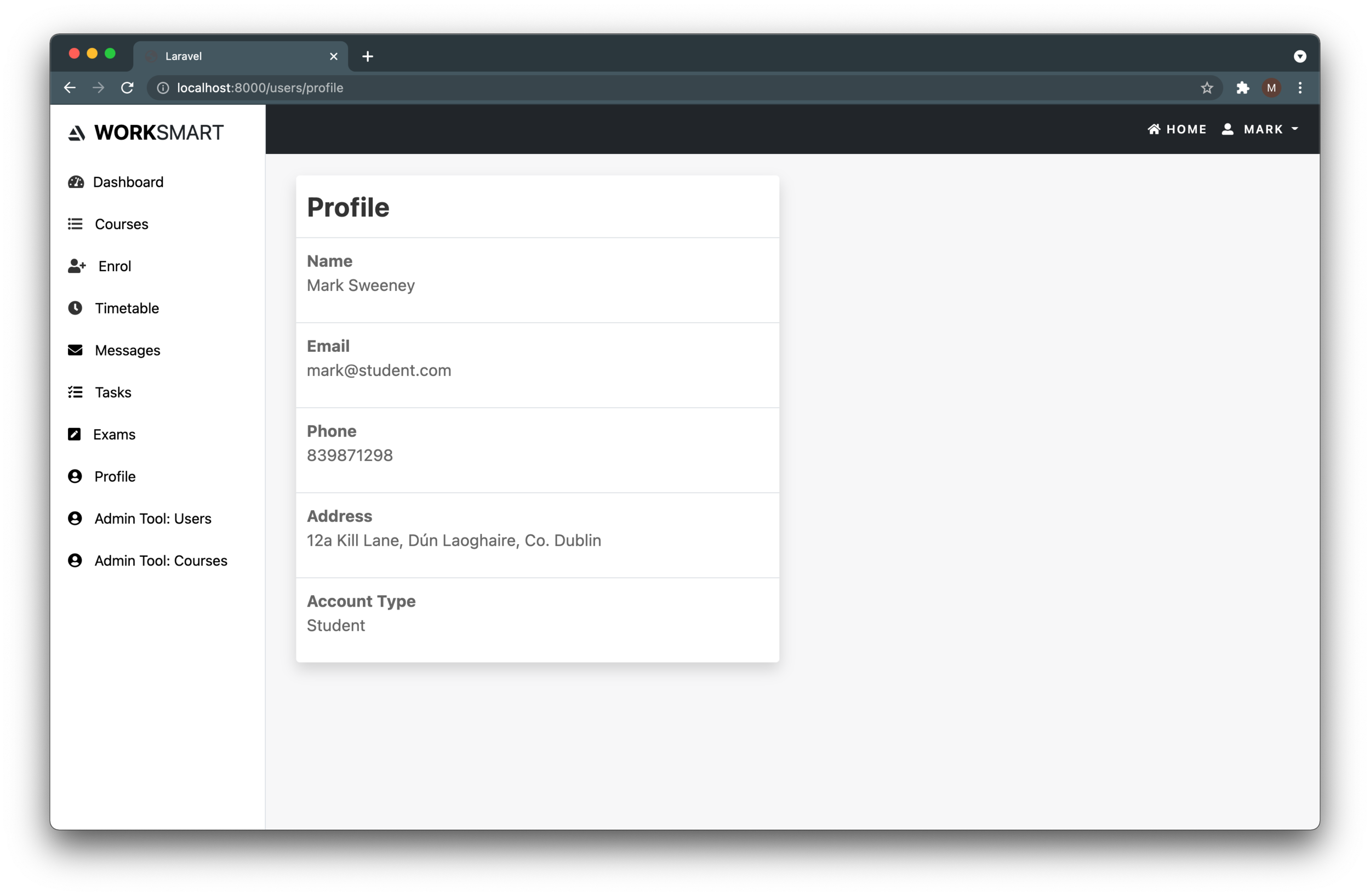Inside the Project: Work Smart
This article will outline all of the work involved in the project ‘Work Smart’. This was a group project I worked on in my third year of college. For this project I had a supervisor and a project partner.
To conclude, I will give my final thoughts on how I thought the project went as a whole.
📝 The Brief
The brief for this project was to design and develop a fully functional timetabling application that could be used by a school or college.
The application needed to function in such a way that any school or college could implement this into their daily routine. This was taken into account during the design and development of the project.
🔎 Research
Before we went to our potential users, we took it upon ourselves to see what our competitors were doing. We came to the conclusion that we had three main competitors. These were, an app called ‘Timetable’ on the Google Play Store, MyStudyLife and VS Ware. ‘Timetable’ and ‘MyStudyLife’ were more on par with what we were looking to develop. We took inspiration from ‘Timetable’ and developed similar solutions in Work Smart to allow users to keep track of their tasks and exams.
After we analysed our competitors, we wanted to hear from our potential users. This involved reaching out to students, teachers and lecturers and asking them to complete a feedback survey.
Overall, we surveyed 43 people, the majority of which were students in the 18-24 age bracket. It was almost a 50/50 male to female ratio so we got a good balance of feedback. The students surveyed were from 9 different colleges around Ireland. This made our data more accurate as it wasn’t all focused on one or two specific colleges.
Almost 95% of these students had a part-time job. This gave us a good idea of the type of students who would be using our application. All of which were balancing being in college full time and working in the evenings and/or weekends. We know this because over 50% of our respondents told us they work either 4 or 5 days per week. From analysing this data, we came to the conclusion that our potential users lead very busy lives and are in need of an application or a new system to help them manage their time more efficiently.
As well as students, we managed to get feedback from teachers and lecturers. We surveyed 36 students, 5 lecturers and 2 teachers. This was very important to us as we needed to get feedback from all of our potential users.
The main takeaway from our user research was that 70% of potential users did not have any sort of scheduling or timetabling app to manage their time in college. Of these 70%, the majority just used either a paper copy of their timetable or else they just had a picture of it on their phone. These two systems will work but they aren’t very efficient. The paper version could be easily lost and the photo could easily get mixed up or deleted by mistake. Some of the other answers we got were that people had it kept in a diary or journal and some just remembered it.
Of the 30% of users that did use a scheduling / timetabling app, most either used the ‘Timetable’ app on the Google Play Store or else they used a calendar tool (Google or Outlook calendar).
We took all of this feedback on board in the initial development stage of the application. Once we had the basic functionality working, we progressed and started building additional features from there.
We compiled all of our research into two user personas, each with their own scenarios. You can see both of them below.
📐 Design
The design stage of the project was split into three different parts — paper prototypes, user interface design and database design.
Below you can see photos, screenshots and diagrams outlining these three stages.
Paper Prototypes
User Interface (UI) Design
Database Design
User Experience (UX) Design
User experience is another design element we focused on big time. It’s important not only for our application to look good but also easy to use. We tested this thoroughly throughout the whole design process.
We focused mainly on the time it took to complete basic tasks. Seeing how easy it was to go from A to B without having to explain to the user how the task was to be completed — it should be obvious to the user. That’s what makes for a top-class user experience. To achieve this, we went for a flat design with basic colours so as not to draw too much attention away from the functionality of the application. We tested it with potential users and got great feedback — both with the paper prototypes and live application.
🛠️ Implementation
A MySQL database was used to store this project’s back-end data.
The Laravel framework along with custom CSS was used to implement the project’s visual design.
PHP was used as the scripting language to retrieve the data from the database and display it in the browser.
HTML was used to structure each of the web pages.
These technologies were decided at the very beginning of the project development lifecycle.
🧪 Testing
We tested the application thoroughly throughout the design and development stages of the project. Every time we made a design change, we asked potential users for their opinion and input. They gave us their opinion and ideas as to how we could do things differently.
As we implemented new features in the code, we tested it to make sure it worked. This helped up narrow down any issues to a specific block of code. Otherwise we wouldn’t be able to identify the problem.
The only real issue we came across was the ability to only allow the admin user to access the admin tools for the application. This obviously isn’t ideal as any user can access the admin tools.
We then tested the application ourselves and with users at the end to get rid of any last-minute bugs. Apart from the admin user problem, everything seemed to be working perfectly.
🤔 Final thoughts
Overall, I think this project went very well. It was clear what we had to do from the beginning as the brief was easy to understand. It was a great learning experience and it helped me big time in my final year of college. To make it easier for myself, I broke my tasks up into smaller to-dos on a checklist so I could focus on one thing at a time. This made the project a lot less overwhelming and easier for me to manage my time as I was able to prioritise what needed to be done first.
We worked very well as a team which made everything run smoothly. When it came to allocating tasks, we used Trello — an online project management tool. This made it clear to both of us who was doing what and when it needed to be done by. We used Slack as our main communication tool. This made it a lot easier to keep in touch and update each other on what we were working on. Our Slack team consisted of myself, my team member, Stephen and our project supervisor.
🚀 Showcase
You can view a showcase of this project by going to this sites home page, or by clicking here.
